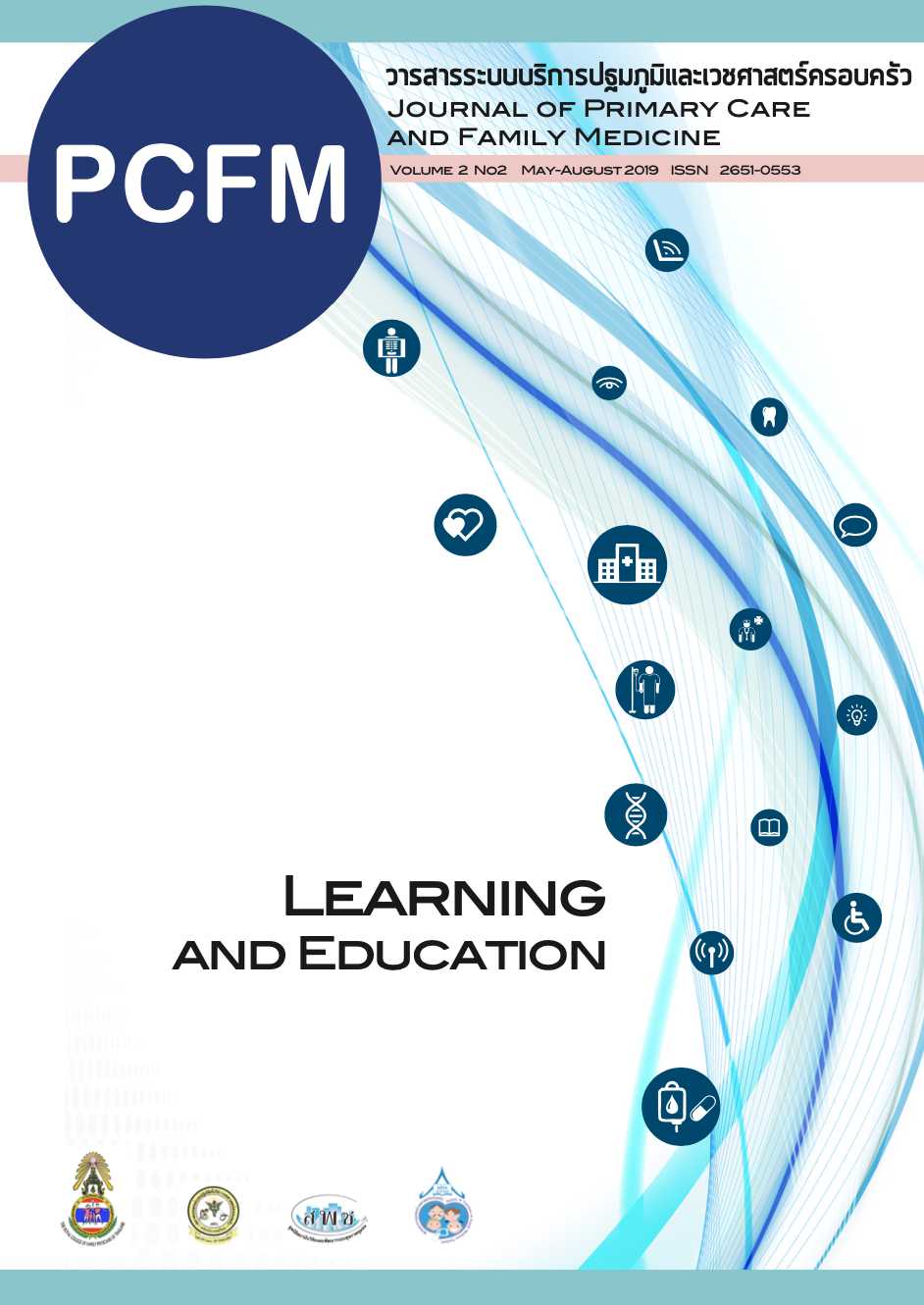Prevalence and Factor-Influenced Orthostatic Hypotension of Older Persons Visiting at the Family Medicine Clinic, Phramongkutklao Hospital
Main Article Content
Abstract
Objective: This study aimed to evaluate the prevalence of OH and orthostatic intolerance (OI), and associated factors of OH among older persons.
Design: The study was a cross-sectional analytic study of 284 participants aged 60 years or older who visited the outpatient clinic, Phramongkutklao Hospital.
Materials and Methods: Face-to-face interviews were conducted andOH was measured by standard method. The prevalence of OH and OI were described by the percentage. Factors associated with OH were analyzed by multivariate logistic regression analysis (p-value < 0.05).
Results:The prevalence of OH and OI was 17.25% and 58.45%, respectively. OH, was found highest in participants aged 80 years and above (adjust OR 5.27 (95% CI; 1.65-16.83, p = 0.005)) compared to those aged 70-79 years (adjust OR 2.82 (95% CI; 1.19-6.72, p = 0.019)). Participants with polypharmacy were more likely to have OH (adjust OR 3.66 (95% CI; 1.52-8.79, P = 0.004)) than those with non-polypharmacy. Additionally, OH was also associated with gait and postural instability (adjust OR: 3.92(95% CI; 1.70-9.05, p = 0.001)), and poor vision (adjust OR: 4.38 (95% CI; 1.92 – 10.00, p = 0.001)).
Conclusion:About one in six older adults was effected by OH, which was associated with multiple factor. Some of these factors are modifiable and can be addressed to reduce the incidence of OH.
Keywords: Older persons, Orthostatic hypotension, Orthostatic intolerance
Article Details
The content and information in articles published in the PCFM journal are solely the opinions and responsibilities of the authors. The journal's editorial board does not necessarily agree with or share any responsibility for them.
All articles, information, content, images, etc., published in the PCFM journal are the copyright of the PCFM journal. If any individual or organization wishes to reproduce, distribute, or use any part or the entirety of the content, they must obtain written permission from the PCFM journal beforehand.
References
2. Low PA. Prevalence of orthostatic hypotension. Clin Auton Res 2008;18 (1):8-13.
3. Mosnaim AD, Abiola R, Wolf ME, Perlmuter LC. Etiology and risk factors for developing orthostatic hypotension. Am J Ther 2010;17(1):86-91.
4. Sclater A, Alagiakrishnan K. Orthostatic Hypotension: A primary care primer for assessment and treatment. Geriatrics 2004; 59(8): 22-7.
5. Ong HL, Abdin E, Seow E, Pang S, Sagayadevan V, Chang S, et al. Prevalence and associative factors of orthostatic hypotension in older adults: Results from the Well-being of the Singapore Elderly (WiSE) study. Arch GerontolGeriatr. 2017 Sep;72:146–152.
6. Chou RH, Liu CJ, Chao TF, Chen SJ, Tuan TC, Chen TJ, et al. Association between orthostatic hypotension, mortality, and cardiovascular disease in Asians. Int J Cardiol 2015;195:40-4.
7. Huang H, Zheng T, Liu F, Wu Z, Liang H, Wang S. Orthostatic Hypotension Predicts Cognitive Impairment in the Elderly: Findings from a Cohort Study. FrontNeurol 2017 Apr 3;8:121.
8. Menant JC, Wong AK, Trollor JN, Close JC, Lord SR. Depressive Symptoms and Orthostatic Hypotension Are Risk Factors for Unexplained Falls in Community-Living Older People. J Am Geriatr Soc. 2016 May;64(5):1073-8.
9. Freeman R, Wieling W, Axelrod FB, Benditt DG, Benarroch E, Biaggioni I, et al. Consensus statement on the definition of orthostatic hypotension, neurally mediated syncope and the postural tachycardia syndrome. Clin Auton Res 2011;21:69-72.
10. O'Connell MD, Savva GM, Fan CW, Kenny RA. Orthostatic hypotension, orthostatic intolerance and frailty: The Irish Longitudinal Study on Aging-TILDA. Arch Gerontol Geriatr 2015;60(3):507-13.
11. Kamaruzzaman S, Watt H, Carson C, Ebrahim S. The association between orthostatic hypotension and medication use in the British Women’s Heart and Health Study. Age Ageing. 2010;39:51-6.
12. Lanier JB, Mote MB, Clay EC. Evaluation and management of orthostatic hypotension. Am Fam Physician 2011;84(5):527-36.
13. Juraschek SP, Daya N, Appel LJ, Miller III ER, Windham BG, Pompeii L, et al. Orthostatic Hypotension in Middle-Age and Risk of Falls. American journal of Hypertension. 2017 Feb;30(2):188-95.


